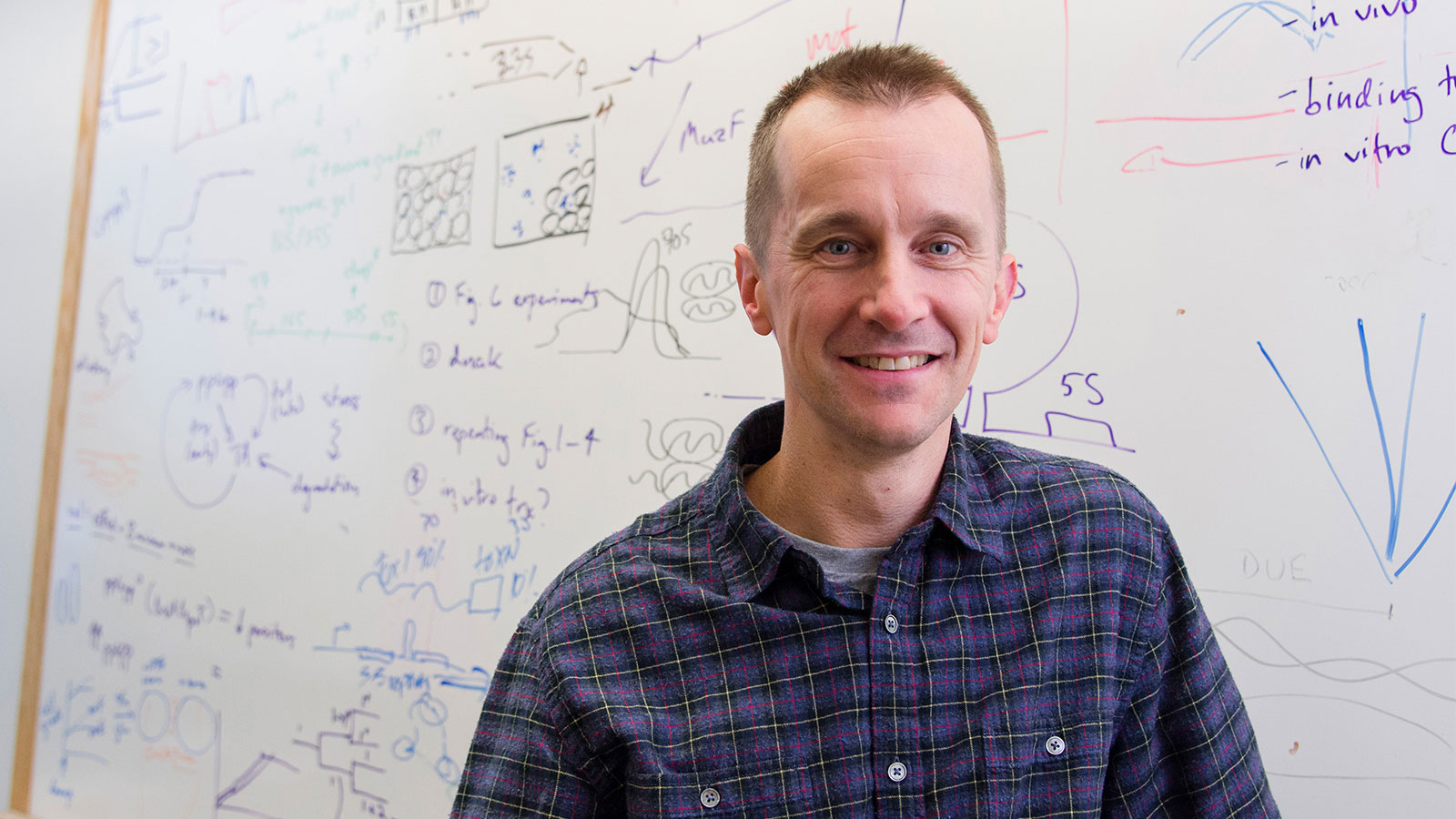Education
- PhD, 2002, Stanford University
- BS, 1997, Molecular Biology, University of California, San Diego
Research Summary
We study the biological mechanisms and evolution of how cells process information to regulate their own growth and proliferation. Using bacteria as a model organism, we aim to elucidate the detailed molecular basis for this remarkable regulatory capability, and understand the selective pressures and mechanisms that drive the evolution of signaling pathways. Our work is rooted in a desire to develop a deeper, fundamental understanding of how cells function and evolve, but it also has important medical implications since many signaling pathways in pathogenic bacteria are needed for virulence.Awards
- Howard Hughes Medical Institute, HHMI Investigator, 2015
- National Science Foundation, Presidential Early Career Award for Scientists and Engineers, 2010
- Howard Hughes Medical Institute, Early Career Scientist, 2009
Recent Publications
- Multi-environment deep mutational scanning reveals the distribution of temperature-sensitive variants in a bacterial kinase. Ghose, DA, Soderstrom, CBW, Mahoney, EM, Laub, MT. 2025. Cell Rep 44, 116446.
doi: 10.1016/j.celrep.2025.116446PMID:41105509 - Emergence of antiphage functions from random sequence libraries reveals mechanisms of gene birth. Frumkin, I, Vassallo, CN, Chen, YH, Laub, MT. 2025. Proc Natl Acad Sci U S A 122, e2513255122.
doi: 10.1073/pnas.2513255122PMID:41091762 - E. coli prophages encode an arsenal of defense systems to protect against temperate phages. Brenes, LR, Laub, MT. 2025. Cell Host Microbe 33, 1004-1018.e5.
doi: 10.1016/j.chom.2025.04.021PMID:40409266 - Anti-viral defence by an mRNA ADP-ribosyltransferase that blocks translation. Vassallo, CN, Doering, CR, Laub, MT. 2024. Nature 636, 190-197.
doi: 10.1038/s41586-024-08102-8PMID:39443800 - A bacterial immunity protein directly senses two disparate phage proteins. Zhang, T, Cepauskas, A, Nadieina, A, Thureau, A, Coppieters 't Wallant, K, Martens, C, Lim, DC, Garcia-Pino, A, Laub, MT. 2024. Nature 635, 728-735.
doi: 10.1038/s41586-024-08039-yPMID:39415022 - Author Correction: A functional selection reveals previously undetected anti-phage defence systems in the E. coli pangenome. Vassallo, CN, Doering, CR, Littlehale, ML, Teodoro, GIC, Laub, MT. 2024. Nat Microbiol 9, 2760-2761.
doi: 10.1038/s41564-024-01724-8PMID:38769436 - A phage-encoded RNA-binding protein inhibits the antiviral activity of a toxin-antitoxin system. Guegler, CK, Teodoro, GIC, Srikant, S, Chetlapalli, K, Doering, CR, Ghose, DA, Laub, MT. 2024. Nucleic Acids Res 52, 1298-1312.
doi: 10.1093/nar/gkad1207PMID:38117986 - Selection of a de novo gene that can promote survival of Escherichia coli by modulating protein homeostasis pathways. Frumkin, I, Laub, MT. 2023. Nat Ecol Evol 7, 2067-2079.
doi: 10.1038/s41559-023-02224-4PMID:37945946 - Marginal specificity in protein interactions constrains evolution of a paralogous family. Ghose, DA, Przydzial, KE, Mahoney, EM, Keating, AE, Laub, MT. 2023. Proc Natl Acad Sci U S A 120, e2221163120.
doi: 10.1073/pnas.2221163120PMID:37098061 - Direct activation of a bacterial innate immune system by a viral capsid protein. Zhang, T, Tamman, H, Coppieters 't Wallant, K, Kurata, T, LeRoux, M, Srikant, S, Brodiazhenko, T, Cepauskas, A, Talavera, A, Martens, C et al.. 2022. Nature 612, 132-140.
doi: 10.1038/s41586-022-05444-zPMID:36385533

